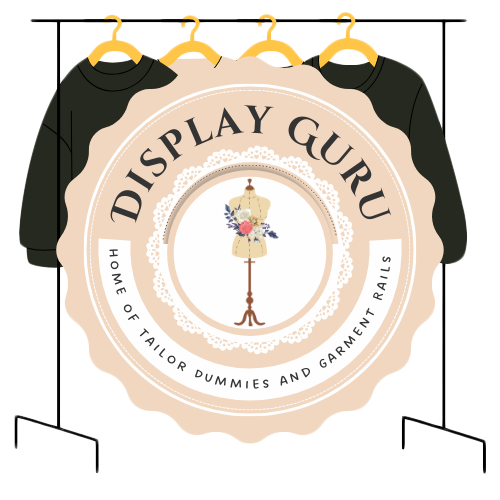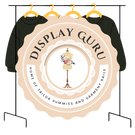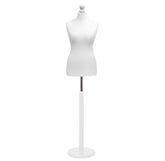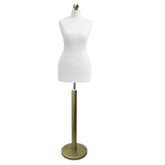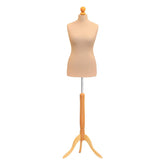Display Stands for Retail Your Guide to Boosting Sales
Display stands are far more than just bits of furniture for holding your products. Think of them as your store's silent salespeople. They’re on the shop floor 24/7, working to grab a customer's attention, showcase your brand's personality, and ultimately, drive sales. They're the critical link that turns a casual browser into a paying customer.
How Display Stands Transform Your Retail Space
Imagine your shop as a carefully curated journey for every person who walks in. In this story, display stands aren't just shelves; they're the signposts, the must-see attractions, and the final destinations. Their job goes well beyond simply holding stock—they create a tangible, engaging atmosphere that a customer just can't get from shopping online.
This is where the power of visual merchandising comes in. A sleek, minimalist metal stand whispers of quality and modern design, while a rustic wooden display might speak to tradition and craftsmanship. This is your brand's story, told without a single word, and it starts the second someone steps through your door.
Guiding the Customer and Driving Sales
The layout of your stands quite literally directs the flow of traffic through your store. You can create a path, encouraging shoppers to wander through specific areas and discover new things. By building a clear visual hierarchy, you put the spotlight exactly where you want it: on high-margin products, seasonal offers, or brand-new arrivals.
And this isn't just theory; the numbers back it up. The UK retail displays market is seeing significant growth, part of a global market valued at around USD 16.5 billion and set to grow by more than 6% annually. Why? Because retailers are realising that creating memorable, interactive shopping experiences is key to success. You can explore more about these retail display market trends in recent industry analysis.
The Silent Salesperson at Work
This infographic perfectly captures how a well-planned aisle, shaped by thoughtfully placed displays, can elevate a simple shopping trip into a guided experience. It truly shows the 'silent salesperson' in action.
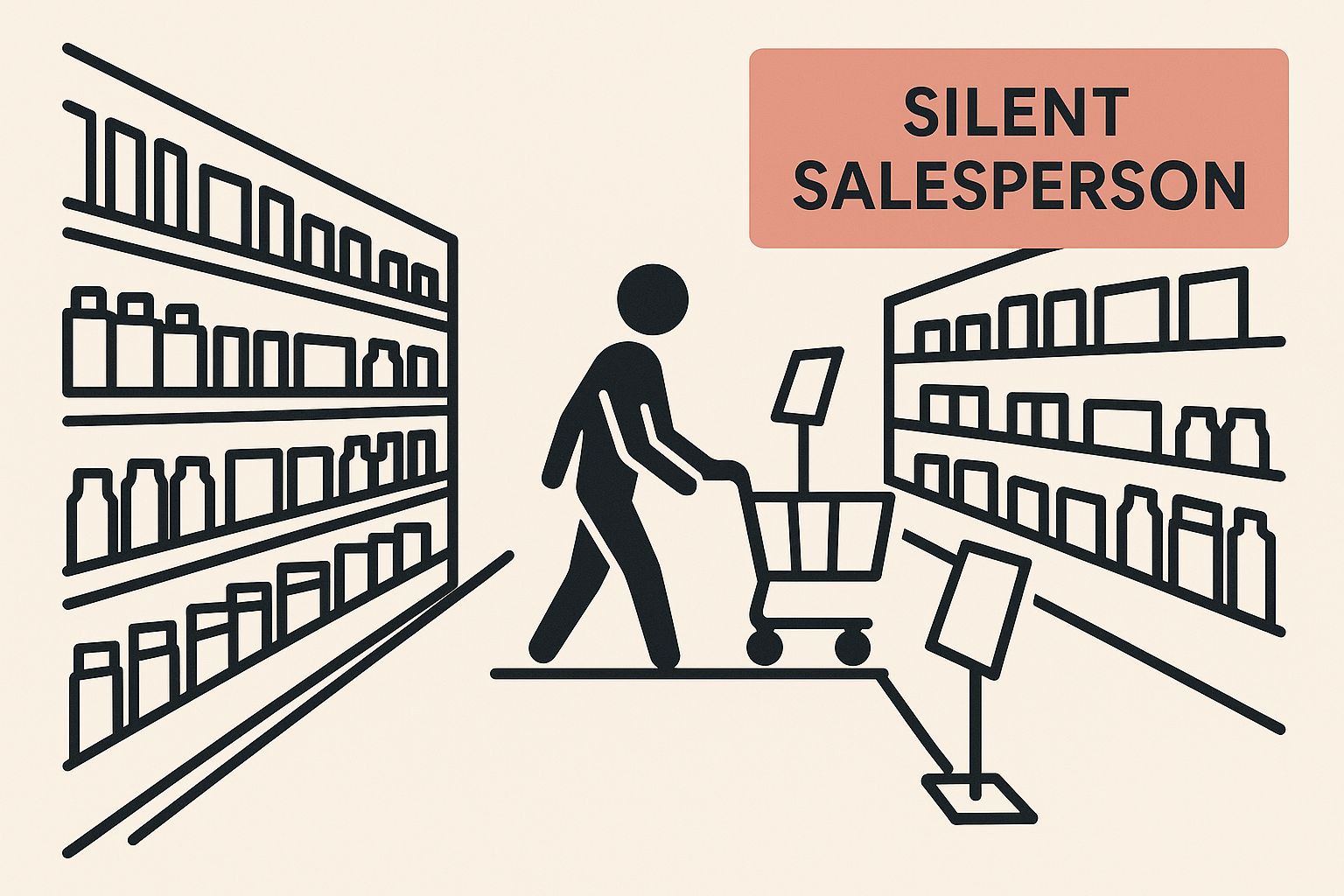
As you can see, structured displays guide a shopper's eye, making it easy and natural for them to discover products. When you get this right, you create a space that doesn’t just show off your merchandise—it actively sells it for you.
A well-designed display stand does three things exceptionally well: it stops the casual browser, engages their interest with a compelling product story, and simplifies the path to purchase. This sequence is the cornerstone of effective in-store conversion.
At the end of the day, it's all about making the customer's experience smooth and enjoyable. When you use your displays strategically, you'll see some brilliant results:
- Increased Impulse Purchases: A tempting display on a countertop or near the till can make a huge difference to those last-minute, unplanned buys.
- Enhanced Brand Identity: High-quality, cohesive displays constantly reinforce who you are as a brand and what you stand for.
- Improved Customer Experience: An organised, attractive layout makes it simple for customers to find what they're looking for, which means less frustration and a better visit.
By treating your displays as active members of your sales team, you unlock their incredible potential. For a closer look, check out our guide on essential retail display stands for your business.
Choosing the Right Type of Retail Display Stand
Picking the right retail display stand isn't like choosing a piece of furniture; it's more like selecting the perfect tool for a specific job. If you take a one-size-fits-all approach, you'll inevitably miss sales opportunities and leave great products gathering dust. The first step to building a store layout that truly sells for you is understanding what each type of display is designed to do.
Think about it this way: you wouldn't display delicate necklaces in a massive, industrial crate. The stand you choose needs to be a perfect match for your product's size, its value, and the kind of story you want to tell. The goal is to create a natural, seamless connection between the item, the display, and its place in your shop.
The Workhorses: Gondola Shelving
Gondola shelving is the undeniable backbone of most retail spaces. Picture it as the library shelving of your store—it’s designed for capacity, clear organisation, and effortless browsing. These robust, often double-sided units are the go-to solution for creating aisles and showcasing a large volume of your core inventory.
Thanks to their incredible versatility, gondolas are a great fit for a huge range of products, from groceries and household supplies to books and DIY tools. Their real strength is in presenting a wide selection in an orderly way, letting customers easily scan and compare different brands or options side-by-side.
The Impulse Drivers: Point of Sale Displays
Point of Sale (POS) or Point of Purchase (POP) displays are the undisputed masters of the impulse buy. These are the small, cleverly placed units you see right at the checkout counter. Their entire purpose is to grab a customer's attention in those crucial final moments before they pay, encouraging one last item to be added to their basket.
A well-placed POS display catches shoppers when their wallets are already open, making it one of the most powerful tools for increasing your average transaction value. Research consistently shows a huge portion of in-store decisions are unplanned, which just goes to show how effective these displays can be.
These units are perfect for small, low-cost items that don't need much thought, such as:
- Sweets and chewing gum
- Magazines or small gift cards
- Travel-sized toiletries
- Batteries or phone chargers
The secret is to offer a hit of convenience and temptation in a compact, eye-catching package.
The Spotlight Stealers: Freestanding Display Units
A Freestanding Display Unit (FSDU) is your store's main stage. Unlike gondolas that form the backdrop of an aisle, an FSDU is built to stand alone and make a real statement. Often crafted from branded cardboard or other lightweight materials, they’re ideal for launching a new product, running a seasonal promotion, or shining a light on a special offer.
Think of an FSDU as a temporary billboard right inside your shop. You place it in a high-traffic area to deliberately interrupt a customer's path and pull their focus towards something new and exciting. Because they are typically temporary, they create a sense of urgency and can be swapped out easily to keep your store feeling fresh and dynamic. For a deeper look at creating a powerful sales environment, feel free to explore our guide on strategic retail display solutions.
The Compact Communicators: Countertop Displays
Countertop displays are the smaller relatives of POS units, but they play a slightly different role. While they can certainly spark an impulse purchase, their main job is often to inform, educate, or offer easy access to smaller products on service counters, information desks, or within specific departments.
They act as miniature showcases, perfect for items that benefit from a closer look. A beauty store might use a sleek acrylic stand to present new lipstick colours, while a local café could use a tiered wooden unit to display its fresh pastries. They're brilliant for organising smaller stock and presenting it in an attractive, accessible way that encourages customers to interact without cluttering up valuable counter space.
Matching Display Stands to Your Retail Goals
Choosing the right display can feel overwhelming, but it's simpler when you align the stand with your goal. This table gives you a quick reference to match the display type to your products, location, and what you're trying to achieve.
| Display Type | Primary Function | Ideal Products | Best Location |
|---|---|---|---|
| Gondola Shelving | High-volume inventory organisation | Groceries, books, hardware, everyday items | Forming the main store aisles |
| Point of Sale (POS) Display | Driving last-minute impulse buys | Sweets, magazines, batteries, travel sizes | At the checkout or till points |
| Freestanding Display Unit (FSDU) | Highlighting promotions or new products | Seasonal items, special offers, product launches | High-traffic areas, entrances, aisle ends |
| Countertop Display | Showcasing and organising small items | Cosmetics, jewellery, baked goods, leaflets | Service counters, reception desks, shelves |
By carefully matching each product to the right type of display stand for retail, you’re not just organising your shop—you’re building a more intuitive and persuasive shopping experience for every customer who walks through your door.
Selecting Materials That Align With Your Brand
The material you choose for your display stands speaks volumes about your brand long before a customer even touches a product. Think of it as your shop's first handshake. A flimsy, poorly chosen material can give off an impression of low quality, whereas a solid, premium material communicates value and attention to detail. This choice is a cornerstone of your visual merchandising strategy, silently telling your brand’s story.
Picking the right material isn't just about what looks good—it's about creating a completely cohesive brand experience. Your decision has to balance aesthetics, durability, and budget. Are you a high-end luxury boutique or a vibrant, quirky pop-up? The answer will point you toward the ideal material to reinforce your identity and connect with your target customer.

Classic And Warm: The Appeal Of Wood
Wood is a timeless choice, bringing a sense of warmth, authenticity, and quality to any retail space. It’s incredibly versatile, looking just as at home in a rustic farm shop as it does in a sophisticated city boutique. The natural grain of the wood gives each stand a unique character, suggesting real craftsmanship and an eco-conscious mindset.
Of course, solid wood can be a significant investment and often needs a bit of care to keep it looking its best. For retailers working with a tighter budget, wood veneers or laminates offer a very similar aesthetic at a more accessible price, striking a great balance between appearance and cost.
Modern And Sleek: The Power Of Metal
Metal displays bring a contemporary, industrial, and often minimalist feel to a shop floor. Materials like steel, chrome, or aluminium are exceptionally durable and can easily support heavy items, making them a practical choice for a huge range of products. A polished finish creates a sense of sleek sophistication that’s perfect for electronics, high-fashion, or modern homewares.
Their clean lines and structural integrity make them especially effective for fixtures like clothing display racks, where durability is non-negotiable. The right metal stand projects an image of strength and modernity, reassuring customers about the quality of what's on offer.
Minimalist And Clean: The Versatility Of Acrylic
Acrylic, which you might know by brand names like Perspex, is the perfect material for a clean, minimalist aesthetic. Its transparency allows your products to be the real hero, creating an uncluttered look that puts all the focus squarely on the merchandise. This makes it a popular choice for cosmetics, jewellery, and high-tech gadgets where every little detail matters.
By creating an almost invisible structure, acrylic displays make products appear as if they are floating. This technique elevates the perceived value of an item and draws the customer’s eye directly to the product itself, not the fixture.
Acrylic is also lightweight and far less prone to shattering than glass, offering a safer and more manageable alternative. Its versatility means it can be moulded into almost any shape you can imagine, opening up endless creative possibilities for unique and eye-catching retail displays.
Cost-Effective And Creative: The Role Of Cardboard
Often underestimated, cardboard and corrugated board are fantastic materials for temporary or promotional displays. They are incredibly cost-effective, lightweight, and can be printed with vibrant, high-resolution graphics, giving you complete creative freedom for seasonal campaigns or new product launches.
This makes them the go-to choice for Freestanding Display Units (FSDUs) and point-of-sale promotions where you need to be agile and make a big impact fast. While it’s not a long-term solution due to its lower durability, cardboard’s eco-friendly and recyclable nature also resonates strongly with environmentally conscious shoppers.
For those seeking truly innovative and custom display solutions, new manufacturing techniques are opening doors to unique material applications. You can explore a professional 3D printing materials guide to see how these modern methods can create bespoke fixtures that perfectly match a brand’s vision, pushing the boundaries of traditional display design.
Mastering the Art of Visual Merchandising
A great display stand is just the canvas; your merchandising strategy is the masterpiece. Even the most perfectly chosen display stands for retail will fall flat if you don't think carefully about how you arrange your products. This is where the art of visual merchandising comes in—it’s all about turning a simple fixture into a compelling story that grabs attention and, ultimately, drives sales.
Effective merchandising isn’t about piling products high and hoping for the best. It’s about creating a deliberate visual journey. Your goal is to guide the customer’s eye, spark their curiosity, and make your products feel completely irresistible. Think of it as the difference between a cluttered, confusing shelf and an inspiring collection that solves a customer’s problem or helps them discover something new.
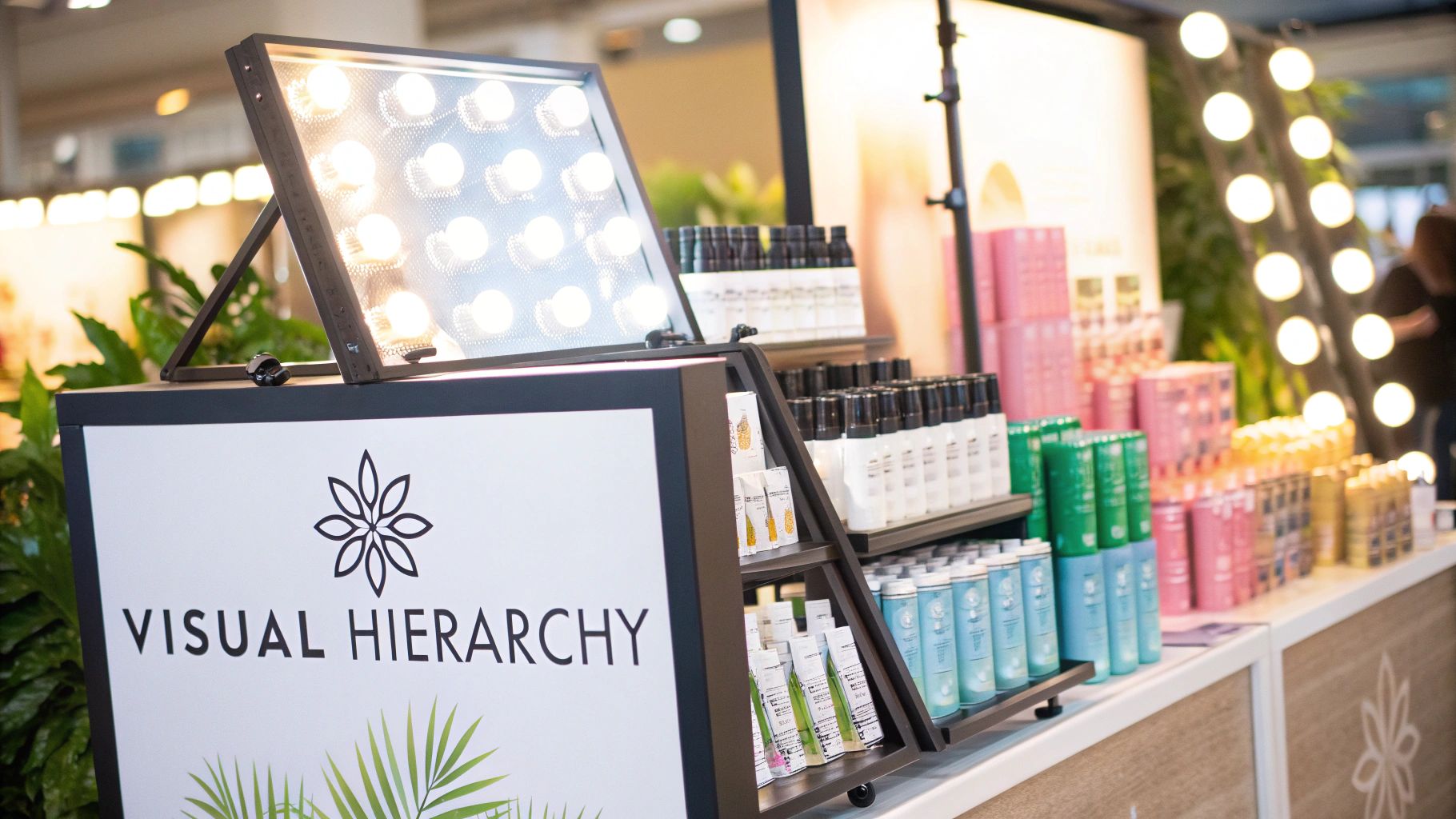
Building Visual Harmony and Hierarchy
One of the oldest tricks in the book is the Rule of Three, and it works for a reason. Grouping items in odd numbers, especially threes, is just more appealing and memorable to the human eye. It creates a sense of balance and intention, stopping the display from looking either too empty or too crowded.
Next up, you need to establish a clear visual hierarchy. Just like a well-designed webpage, your display needs a focal point. This is your "hero" product—the single item you want customers to notice first. You can make it the star of the show by placing it at eye level, shining a stronger light on it, or simply giving it more breathing room than the surrounding items.
A display without a clear hierarchy forces the customer to work too hard. By creating a focal point, you instantly communicate what’s most important, making the shopping experience intuitive and far more effective.
Once your hero is in place, you can build around it with secondary products that complement it. This structure naturally guides a shopper’s gaze from the main attraction to related accessories or alternatives, making it easy for them to see how different products work together and encouraging multiple purchases.
Telling a Story with Your Products
The most powerful displays don't just show products; they tell a story. Instead of grouping all your mugs together, for instance, why not create a "perfect morning" display? You could pair a stylish coffee mug with a bag of premium coffee beans, a small cafetière, and a packet of gourmet biscuits.
This approach transforms individual items into a complete solution or an aspirational lifestyle. It helps customers visualise how the products fit into their own lives, shifting the focus from the price tag to the experience. When you tell a great story, you're not just selling an item; you're selling an idea.
To really nail it, think about how other elements in your store can support this narrative. The smart placement of custom interior signs can reinforce your brand message, direct shoppers to key displays, and create a cohesive in-store atmosphere that makes your displays even more impactful.
Leveraging Colour and Lighting
Colour is a powerful, non-verbal communication tool. Using a cohesive colour palette can create an instant sense of harmony and sophistication. You could group items by colour to create a bold, visually striking block, or use contrasting colours to make one specific product really pop. A little understanding of basic colour psychology can go a long way in influencing mood and purchasing decisions.
Lighting is just as critical. The general ambient light in a store is rarely enough to make a display stand out. Use spotlights or accent lighting to draw attention to your hero products and create a bit of drama and depth. A well-lit display feels more premium and important, subtly communicating the value of the items on it. The right light can make colours look more vibrant and textures more appealing, too.
Keeping Your Displays Fresh and Engaging
Finally, remember that a display that never changes eventually becomes invisible. To keep customers engaged and give them a reason to see what's new, your displays need to be dynamic. This doesn't mean a complete overhaul every week, but a regular refresh is absolutely essential.
Here are a few simple guidelines to keep the momentum going:
- Major Displays: Plan for big changes seasonally or to tie in with major holidays like Christmas or Easter.
- High-Traffic Displays: For point-of-sale units or endcaps, aim for a bi-weekly or monthly refresh to highlight promotions or new arrivals.
- Small Tweaks: Even minor adjustments—like swapping the hero product or reorganising a few items—can make a display feel new again.
By putting these strategies into practice, you can elevate your displays from simple fixtures to powerful sales tools. For a deeper dive, you can find more practical advice in our complete https://www.displayguru.co.uk/blogs/news/visual-merchandising-guidelines.
Embracing the Future with Smart Retail Displays
Imagine for a moment that your displays could do more than just sit there holding products. What if they could actually talk to your customers, offer tailored recommendations, and gather priceless sales data on the fly? That future isn't some distant sci-fi concept; it’s already here, transforming static fixtures into smart display stands for retail. This isn't just an upgrade; it's a complete reimagining of what a display can do, turning passive product holders into proactive sales assistants.
https://www.youtube.com/embed/PESmgpS_e4o
These intelligent displays are packed with technology like touchscreens, vibrant digital signage, and even artificial intelligence, all working together to reshape the in-store experience. Think of a smart display as your most clued-up team member—one that never takes a break, tirelessly serving up dynamic product info, running demo videos, and guiding shoppers toward their perfect purchase.
For retailers looking to get ahead, this shift towards interactivity is more than just a gimmick. It’s a powerful way to boost customer engagement and get a real, data-backed understanding of how people shop in your store.
The Rise of Interactive Customer Experiences
At its heart, a smart display is all about creating a conversation with the shopper. Instead of a customer having to track down a staff member to ask about product specs or stock levels, an interactive screen can put all that information at their fingertips. This self-service model empowers customers and frees up your team to handle the more nuanced, high-value sales conversations.
And this technology is catching on, fast. The UK smart display market, currently valued at around USD 399 million, is on track to more than triple, hitting an estimated USD 1.21 billion. This explosive growth is fuelled by displays that do it all—from showing product details to hosting interactive video calls. If you'd like to dive deeper into the numbers, you can learn more about the UK smart display market projections.
Smart displays bridge the gap between the rich, endless content of online shopping and the tangible, sensory experience of being in a physical store. They truly offer the best of both worlds.
By making the shopping journey more engaging and informative, you create a memorable experience. That's the kind of thing that makes customers stick around longer and, more importantly, come back again.
Key Technologies Shaping Smart Displays
A few key technologies are powering this retail revolution. Getting to grips with what they do will help you pick the right tools for your own shop floor.
- Digital Signage: This is so much more than a TV screen on a wall. Modern digital signs can show dynamic content that shifts based on the time of day, your current promotions, or even the type of customer standing in front of them.
- Touchscreen Interfaces: Letting customers tap, swipe, and explore product catalogues, customise options, or read reviews creates a hands-on experience that a printed sign could never hope to match.
- AI and Data Analytics: This is where it gets really clever. The most advanced displays use AI to suggest personalised recommendations based on a shopper's choices. Crucially, they also gather anonymous data on which products get the most attention, how long people interact with the display, and which features they use most.
This kind of data is gold. It gives you direct, real-world feedback that can sharpen up everything from your stock decisions and merchandising layouts to your next marketing campaign. For a bit more inspiration, take a look at our collection of innovative retail display ideas. By embracing smart technology, you’re not just buying new furniture; you’re investing in intelligent assets that will actively help grow your business.
Common Display Stand Mistakes to Avoid
Investing in quality display stands for retail is a great first step, but it's only half the battle. Even the most beautifully crafted stand can fall flat if it isn't used correctly. A few simple merchandising missteps can easily sabotage your efforts, turning a potential customer magnet into just more background noise.
So, let's talk about what not to do.
The ‘More is More’ Myth
One of the most common traps retailers fall into is overcrowding. It’s tempting, I get it. You want to show off as much of your stock as possible. But cramming every last item onto a single stand creates a chaotic, jumbled mess that just overwhelms shoppers. It makes it impossible to focus on any one product, and frankly, it can make your merchandise look cheap.
Think of it like a website's homepage. If it’s cluttered with too many pop-ups and clashing banners, you'd click away in seconds. A retail display needs that same sense of clear navigation and breathing room.
Your display isn't a stockroom shelf; it’s a curated showcase. Give each product the space it deserves to be seen and appreciated.
Bad Lighting and Brand Confusion
Another classic mistake is forgetting about lighting. Simply relying on the general overhead lights of your shop is a recipe for disaster. This kind of lighting almost always casts unflattering shadows, making your products look dull and lifeless. A product sitting in the dark is a product that will be ignored. Dedicated, strategic lighting is non-negotiable—it’s what makes your items pop and draws the customer's eye.
Equally damaging is brand inconsistency. When you use a random hotchpotch of display styles, materials, and colours, your shop floor starts to feel disjointed and amateurish. Your displays are a physical extension of your brand identity. They should all feel like they belong to the same family, telling a consistent story from the moment someone walks in. This cohesion builds trust and quietly reinforces who you are.
To make sure your displays are pulling their weight, be sure to sidestep these key errors:
- Overcrowding: Don't just pile it high. Create focused, thoughtfully chosen selections that are a pleasure for customers to browse.
- Poor Lighting: Never assume the main lights are good enough. Use spotlights or integrated lighting to make your star products shine.
- Brand Mismatch: Steer clear of clashing styles. Make sure every display stand for retail reflects your brand’s colours, textures, and overall vibe.
- Forgetting the Upkeep: Don't let your displays get dusty, damaged, or disorganised. A quick check-in each day keeps them looking professional and inviting.
By consciously avoiding these all-too-common blunders, you can turn your displays into powerful sales tools that genuinely enhance the customer experience.
Your Top Questions About Retail Displays, Answered
Even with the best strategy, putting new display stands for retail into practice always brings up a few practical questions. It’s completely normal. To help you move forward with confidence, I've put together some straightforward answers to the queries we hear most often from retailers.
Getting these details sorted ensures your investment in new displays really pays off. Let’s get into it.
How Often Should I Change My Retail Displays?
There’s a fine line between consistency and stagnation. As a good rule of thumb, plan to refresh your main in-store displays with the seasons, or at the very least, once a month. This simple rhythm keeps your shop feeling current and gives your regulars a reason to pop in and see what’s changed.
But for those prime real estate spots – think window displays or right by the till – you’ll want to pick up the pace. Changing these weekly or every fortnight to showcase new arrivals, promotions, or bestsellers is a smart move. It sends a clear message to shoppers: there's always something new and exciting to discover here.
How Can I Measure the ROI of a New Display Stand?
Working out the return on investment (ROI) for a new display is more straightforward than you might think. It really boils down to a simple before-and-after comparison.
- Get Your Baseline: For two to four weeks before you even think about setting up the new display, track the sales figures for the exact products you plan to feature. This number is your benchmark, your "before" picture.
- Track and Compare: Now, bring in the new stand. For the same amount of time, track the sales of the very same products. The difference in takings, after you subtract the cost of the stand, is your direct financial ROI.
Don't just stop at the numbers, though. Watch how people interact with the display. Are more customers stopping to look? Are they touching the products? Chat with your staff, too – they'll have invaluable insights on customer comments and reactions. This qualitative feedback gives you the full story of your display's impact.
What Are the Best Display Stands for Small Shops?
When floor space is at a premium, the golden rule is to go vertical. The goal is to maximise every square inch you have without making the place feel cluttered. The best display stands for retail in smaller shops are the ones that draw the eye upwards and keep the floor clear.
Here are a few clever, space-saving options to consider:
- Tiered Countertop Units: Perfect for organising smaller impulse buys on your checkout counter without hogging precious surface area.
- Wall-Mounted Shelving: Getting products completely off the floor is a brilliant trick to make a small shop feel much more open and airy.
- Slatwall or Pegboard Systems: These are the champions of flexibility. You can switch up your layout in minutes using different hooks, shelves, and baskets whenever your stock changes.
- Slim Freestanding Displays: Keep an eye out for tall, narrow units that can tuck neatly into an unused corner or between larger fixtures.
The real key is to keep everything looking organised and uncluttered. It makes the entire space feel more inviting and shoppable, not cramped and overwhelming.
At Display Guru, we live and breathe this stuff. We provide the high-quality fixtures you need to build compelling and effective retail spaces. Explore our full range of professional display solutions today at https://www.displayguru.co.uk.
